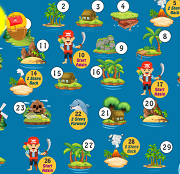Mammal Facts, Science Game Activity for Kids
Scientists can classify animals in many different ways. This science game teaches children the basics of mammals. Mammals, which are warm-blooded mammals, feed their offspring with milk from the mammary glands. Mammalian mothers nurse their babies by producing milk for her offspring. To learn more about the biology and evolution of humans, scientists study mammals.
Delving into the World of Mammals: A Furry Exploration
Mammals, a group so diverse that it encompasses creatures from the tiniest bats to the gigantic whales, are a fascinating realm of the animal kingdom. This vast group is filled with various species, behaviors, and unique characteristics that distinguish them from other animals. Dive with us into the intriguing world of mammals and don't forget to enjoy the interactive science game for kids that brings this knowledge to life!
What Defines a Mammal?
Before we dive into specifics, let's understand the basic mammal definition. Mammals are warm-blooded vertebrates that have hair or fur, produce milk to feed their young, and have three distinct middle ear bones.
Mammal Human: Us!
Yes, we, humans, belong to the category of mammal human. This means we share a lot of the same basic characteristics with other mammals, even if it sometimes doesn't seem like it!
Surprising Mammals: Beyond the Usual
There are certain animals you might not immediately recognize as mammals. Let's unravel some of these surprises.
Mammal Dolphin and Mammal Whale
Despite their fish-like appearances, both the mammal dolphin and mammal whale breathe air, have live births, and nurse their young with milk.
Mammal Birds? A Common Misconception
While there are no mammal birds, birds and mammals are both warm-blooded, which often leads to confusion. Birds, however, lay eggs and have feathers, distinguishing them from mammals.
Mammal Shark: Another Myth
Sharks are fish, not mammals. The term mammal shark can be misleading. While sharks give birth to live young, they don't nurse them with milk.
Mammal Bat: The Flying Mammal
The mammal bat is the only mammal capable of sustained flight. Bats are not only essential for pollination but also play a critical role in controlling insect populations.
The Rare Egg-laying Mammal
When we say mammal lays eggs, only a few species come to mind, like the platypus. These exceptions remind us of the vast diversity within the mammalian world.
A Quick Dive into the Mammal List
There are over 5,000 species of mammals. The mammal list includes animals found on land, in the sea, and in the air. Each has adapted beautifully to its environment, showcasing nature's incredible versatility.
Ready to Test Your Mammal Knowledge?
Eager to challenge what you've learned? The Mammal Facts Science Game offers a vibrant platform for kids to reinforce their understanding of mammals. This game ensures that learning about mammals remains a delightful experience.
In Conclusion: Marveling at Mammalian Wonders
Mammals showcase the wonders of evolution and adaptation. From the depths of the oceans with whales and dolphins to the skies with bats, mammals have conquered nearly every environment on Earth. As we immerse ourselves in the study of mammals, interactive platforms bring this knowledge to the fingertips of eager young learners, ensuring the journey remains as enthralling as the subject itself."
Read more
Facts about Mammals
It is important to learn more about mammals in order to play the game well.
Mammals, a group of vertebrate mammals that belongs to the Mammalia class, are one example. Mammary glands produce milk for their young and are what distinguish them. They have fur, a neocortex and hair as well as three middle ear bones. These facts about mammals will help you get started. These fascinating facts about mammal life will delight those who enjoy learning more about the animal kingdom.
Different mammals have different abilities and live in different environments. While whales and dolphins can be considered marine mammals, sharks are not. The Blue Whale's high-pitched, loud 188 decibel call will charm those who love animals.
Bats are mammals capable of flying. These mammals are one of the few animals that can fly and swim.
All mammals have hair at one time or another in their lives. Some have hair even before they get born. Warm-blooded mammals also have a four-chambered, four-chambered heart. All mammals have lungs that allow them to exchange carbon dioxide and oxygen.
Mammary glands are essential for the production of milk in mammals. Mammals are born alive. There are differences in the length of gestation between the sexes. An elephant's gestation time is almost two years, while a human pregnancy lasts forty weeks.
Mammals and birds share many important similarities and differences. Both birds and mammals are warm-blooded. They are both vertebrates. They are both vertebrates, but birds lay eggs and are covered in feathers. Mammals deliver their young live.
Warm-blooded mammals are warm-blooded and have a strong backbone. Mammals also produce milk for their offspring. They are the last major animal species to be discovered on Earth. They have evolved into an amazing variety of sizes and shapes. Mammals come in many sizes, from tiny shrews all the way to large sea-dwelling animals. There are more than 5,000 species of mammals including dogs, cats and whales. There are many species of insects.
There are two types of mammals: those with fur and those without fur. They can live on the ground, in the water, and even in the air. Some are capable of flying. Despite their similarities, mammals are unique. These traits will help you to understand the animal kingdom. You are missing the animals you love.
The blue whale is the largest mammal in the ocean. It can reach 80 feet in length and weigh over 419,000 pounds. The rhinoceros and elephant are the three most common land mammals. The African elephant is the largest land animal today, growing to over 13 feet in height and weighing more than 15 thousand pounds. The hornless rhinoceros, which weighed in at 33,000 pounds and stood almost 17 feet tall at the shoulder, were common in the past. While elephants are today the tallest mammals, giraffes and other large animals are equally impressive.












